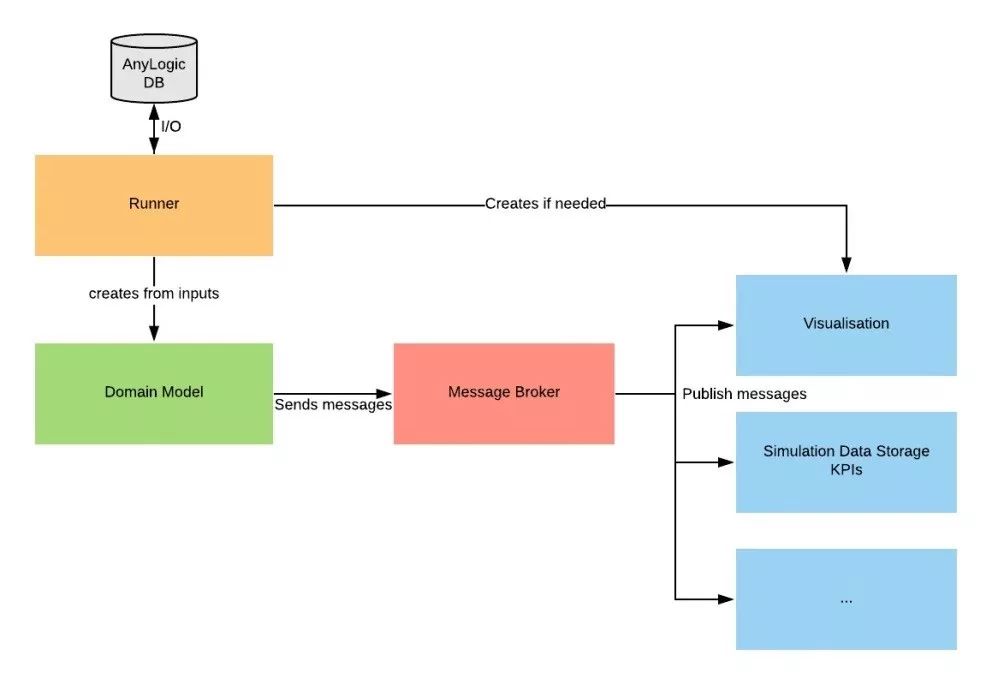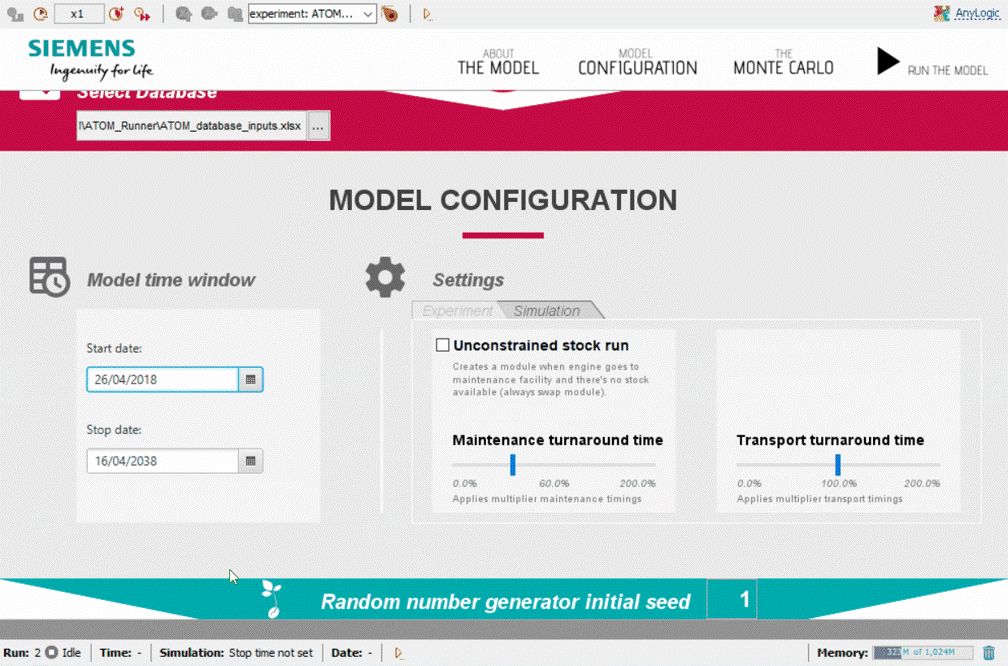ATOM:Digital Twin of Siemens Gas Turbine Fleet Operations
Posted AnyLogic
tags:
篇首语:本文由小常识网(cha138.com)小编为大家整理,主要介绍了ATOM:Digital Twin of Siemens Gas Turbine Fleet Operations相关的知识,希望对你有一定的参考价值。
OVERVIEW
ATOM
As the deployment of Internet of Things (IoT) systems grows, the concept of something physical having a virtual avatar is increasingly important.
Digital twins represent a virtual avatar of a physical system. These digital representations are built using the domain knowledge of subject matter experts as well as data collected from sensors on-board the system.
The Agent-based Turbine Operations & Maintenance (ATOM) model is a digital twin simulation model developed by decisionLab Ltd and Siemens. The digital twin emulates the global maintenance repair and overhaul (MRO) operations of Siemens’ aero-derivative gas turbine division. Driven by live data already available within the supply chain, the model provides the capability to use sophisticated simulation and data-analytics methodologies to optimize the fleet operations of Siemens, enabling better data-driven decision-making to improve productivity and efficiency in customer operations and asset management.
PROBLEM
Siemens produces a wide range of industrial turbines and recently acquired the Rolls-Royce energy gas turbine and compressor business. Following this, Siemens introduced a new aero-derivative gas turbine (SGT-A65) based on the acquired assets.
With the new turbine not being wholly developed in house, its production and maintenance produced multiple new challenges, including unforeseen in-service performance and support issues.
The excel-based forecasting tools used by Siemens at that time failed to perform efficiently under the new circumstances. The volume of data was too much to manage in Excel and the results were not clear enough to easily identify bottlenecks and quickly find solutions.
In short, the company needed a more powerful method for resolving its gas-turbine fleet operation issues. The main needs were to:
Predict business performance and forecast KPIs of interest to inform decision-making;
Evaluate investment options — run “what-if” scenarios to quickly understand where best to invest.
Siemens wanted to visualize the whole production and maintenance process, including the supply-chain logistics, which are critical to the system. With the ability to visualize the results of multiple “what-if” scenarios, in order to communicate the business case for several investment options and enable better decision-making, both inside the company and outside, with clients.
SOLUTION
To meet the challenges, decisionLab and Siemens proposed a digital twin - ATOM. The ATOM digital twin exploits the emergence of digital technologies across Siemens engineering and manufacturing businesses. It uses the vast quantities of data that is available to integrate customers, supply chain, production, and maintenance in order to improve productivity and efficiency in customer operations and asset management. At its core ATOM achieves this by modelling the detailed intricacies of customer operations, maintenance facility operations, engine characteristics, and supply-chain logistics across the whole fleet and operational cycle.
Representing the entire system as a digital twin provides great analytical capabilities. Users can examine any aspect of the system and run what-if scenarios to explore all the interdependencies. Such a system would easily identify bottlenecks and enable decision-making that considers the operation of the system as a whole.
The development of digital twin requires a highly complex simulation environment, and developers will often use a software development approach. This requires great flexibility from the simulation software to successfully model different levels of business processes and manage varying complexity. For this reason, decisionLab chose AnyLogic as the core simulation tool.
In this case, a core part of the model was made from many independent elements and using agent-based modeling it was possible to represent the necessary details. To build the model, the developers captured data relating to the following aspects of Siemens gas turbine fleet operations:
●Customer operations(in what conditions, e.g. temperature, customers use the turbines)
●Maintenance facility operations(both main maintenance facilities were considered)
●Engine characteristics (different failure modes associated with particular engine components)
●Supply-chain logistics(as customers are located all over the world)
This is represented in the agent interaction diagram, which defines the complexity of the digital twin environment.
Agent interaction diagram
In addition to the agent-based modelling approach, the digital twin incorporated a modular architecture, which allowed the system to be divided virtually into its constituent functional layers and provide a system engineering-based approach to model development. This approach allows concurrent users to interact with the model in different ways, and to use different data sets, and also enable the development team to adopt a continuous development and deployment approach without disruption – a reinforcement learning element is planned.

A modular architecture of the digital twin
In collaboration with Siemens future phases of development could include the following:
●To move from an Excel database to a centralized database containing all Siemens systems and databases, for optimized data storage and processing
●To deploy the model in the cloud, so multiple users can access it
●To make it possible to use ATOM as a demonstration tool, for work with customers (i.e. to continue improving the visualization part)
●To add a reinforcement learning capability to optimize the dynamic decision-making process within the simulation environment and present an optimal policy that Siemens might adopt business investment decisions
OUTCOME
DecisionLab have created a sophisticated digital twin that captures all the functionality required by Siemens. The ATOM-twin simulation model, representing the entire fleet operations of Siemens aero-derivative gas turbines, enables its users to:
●capture and forecast system KPIs
●visualize fleet and maintenance facility operations
●identify bottlenecks in the system
●run both quick ‘what-if’ and detailed scenarios to aid investment decision-making
Although a very complex simulation model, decisionLab delivered a user-friendly and interactive system, usable across the organization. Both upper-management and analysts can use ATOM to easily meet their needs.

<< 滑动查看下一张图片 >>
The ATOM-twin simulation model
Project presentation by Dr. Amrith Surendra, Senior Consultant, and Vitor Lemos, Simulation Modeling Consultant, from decisionLab
以上是关于ATOM:Digital Twin of Siemens Gas Turbine Fleet Operations的主要内容,如果未能解决你的问题,请参考以下文章